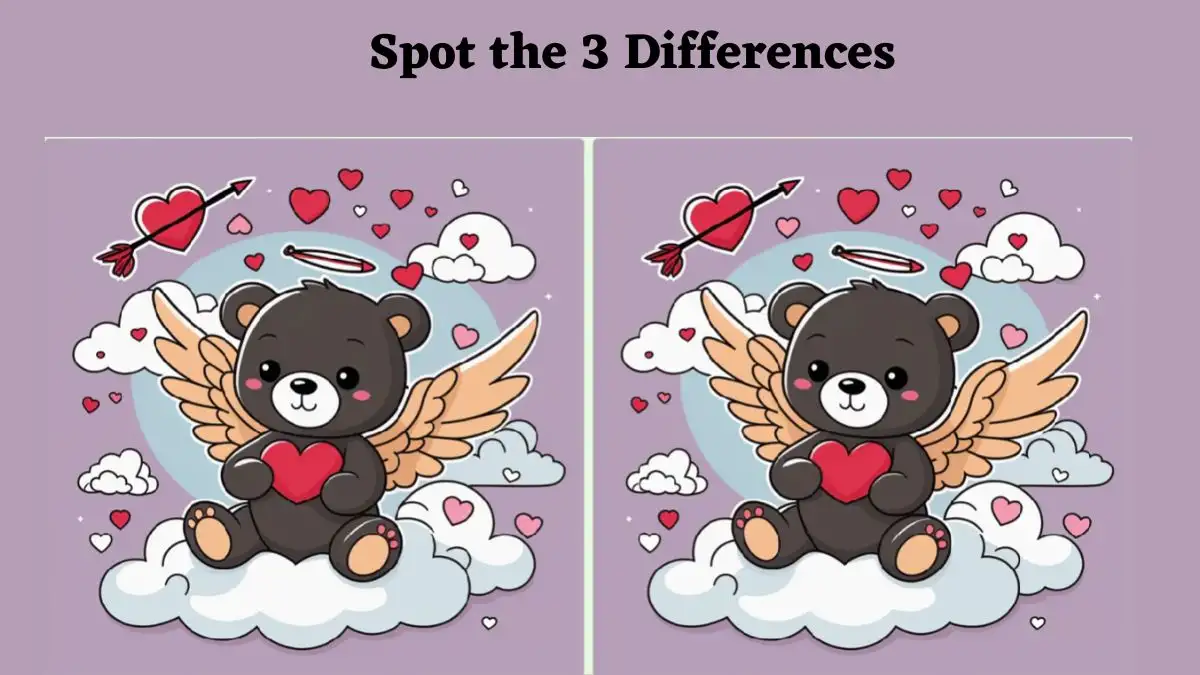Optical illusion spot the Difference picture Puzzle: Test your eye power and spot 3 differences between the Cute Teddy Bear pictures within 9 seconds
by Sangeetha
Updated Feb 17, 2024

Optical illusion
Optical illusions captivate the mind by exploiting the intricate relationship between perception and reality. These visual phenomena play tricks on our eyes, challenging our brain's ability to interpret and make sense of the surrounding world.
Optical illusions often rely on clever manipulations of color, light, shadow, and perspective, creating images that deceive and confound our senses. Shapes may appear to warp and bend, sizes can seem distorted, and static images may give the illusion of movement.
One popular type of optical illusion is the ambiguous figure, where the brain struggles to settle on a single interpretation, leading to a fluctuating perception. Another intriguing category is the trompe-l'oeil, which tricks the viewer into perceiving a two-dimensional image as three-dimensional.
Optical illusion spot the Difference picture Puzzle: Test your eye power and spot 3 differences between the Cute Teddy Bear pictures within 9 seconds
In this optical illusion spot-the-difference puzzle, your challenge is to test the power of your eyesight by identifying three subtle distinctions between two cute teddy bear pictures, all within a time limit of just 9 seconds. Dive into the charming world of teddy bears and scrutinize the images closely.
Look for variations in color, shape, or positioning that may be easily overlooked at first glance. The key is to sharpen your observational skills and enhance your ability to notice even the slightest differences. Train your eye power and enjoy the thrill of successfully uncovering the hidden variances in this delightful puzzle. Are you up for the challenge? Start the timer and let the visual exploration begin!

Optical illusion spot the Difference picture Puzzle: Test your eye power and spot 3 differences between the Cute Teddy Bear pictures within 9 seconds - Solution
Delve into the world of optical illusions and challenge your eyesight with this spot-the-difference puzzle featuring adorable teddy bear pictures. As you focus on comparing the two images, you'll need to identify three subtle variations within a tight time frame of 9 seconds.
The solutions to this puzzling task lie in the details. Look closely at the teddy bears' fur color, facial expressions, or any accessories they may be sporting. Perhaps one bear has a slightly different posture, or there's a small object missing or added in one of the images.
Train your eyes to catch these nuances, and the differences will reveal themselves. With a keen eye and quick thinking, you can conquer this challenge and gain a sense of accomplishment as you spot
This image is sourced from the Breaking Fun YouTube channel

Optical illusion spot the Difference picture Puzzle: Test your eye power and spot 3 differences between the Cute Teddy Bear pictures within 9 seconds - FAQs
An optical illusion is something that plays tricks on your vision. Optical illusions teach us how our eyes and brain work together to see.
There are three main types of optical illusions: literal illusions, physiological illusions, and cognitive illusions.





